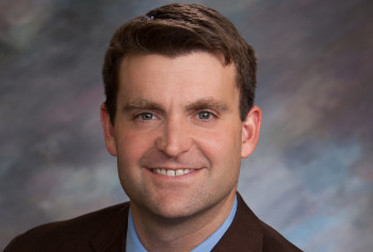New NATE Committee Hoping to Help Craft Drone Regulation
ALEXANDRIA, VA.—If you haven’t seen a video of drone footage of engineers climbing up radio and broadcast towers I highly recommend that you do so. They provide some stunning — and potentially vertigo-inducing — looks. But, as with almost all drone footage videos, questions arise about whether or not having these unmanned aerial systems around broadcast towers can be beneficial or dangerous. To help answer those questions, and to help craft impending regulations in regard to the use of UAS, the National Association of Tower Erectors has formed a UAS Committee.

Todd Schlekeway This committee — made up of NATE Executive Director Todd Schlekeway, representatives from NATE member companies Sentara and Hazon Solutions, and tower contractors — was just announced but has its roots in meetings held by the National Telecommunications Information Administration.
“We realized very quickly after the first NTIA stakeholder meeting that we needed to formalize our efforts here because we want to help proactively shape this in terms of its impact and use on wireless infrastructure on our side of the industry,” said Schlekeway.
Drones already have a presence in the tower industry outside of those dramatic videos. Operators can use them for photography, planning, hazard inspection, project-completed documentation, and training. However, not all companies at present are able to utilize drones. Some, like Sentara and Hazon Solutions, have been granted exemptions by the FAA for commercial use but all drone operations must be handled by a licensed operator.
This is one of the primary issues for the UAS committee, as the FAA is expected to finalize rules on who can operate drones, particularly the question of whether an operator must be a commercial pilot.
“I envision a day where the contractor companies are going to have an unmanned aerial system as part of their tool box,” said Schlekeway. “This is an essential piece of equipment down the road.” Therefore it’ll be important to allow operators who are not commercial pilots. “That’s key, so we want to help play a role in that.”
Schlekeway does see a potential obstacle: non-commercial users. Drones have become popular, with many people taking them up as a hobby. Such uses have caused issues, flying near planes or into restricted airspace, including multiple instances of landing on the White House lawn.
“We want to make sure the non-commercial users don’t ruin the potential use of this for commercial users who are qualified to utilize them,” Schlekeway said. “It’s a serious issue and I’m glad the government is taking it slowly because you don’t know where this will go.”
In the meantime, the UAS Committee will make known its stance on the use of drones and other UAS devices. “Our overriding goal is to make sure these things get integrated into our industry safely,” Schlekeway said. “We want to be in a position to impact the process to where the regulators and policymakers keep out industry in mind because we have a unique industry.”
Schlekeway says that the UAS Committee expects to be a source of education for NATE members and non-members as regulations and other benchmarks of UAS integration are achieved. At the end of the day, Schlekeway and the UAS Committee stress safety.
“We’re going to work hard to make sure that these devices are integrated in a safe manner. We think it will be a long-term tool in the tool box to use so that work is done safely on those structures and the work is done with quality. I said from day one, and it’s not just pertaining to this issue, I’ve seen time and time again a direct correlation between safety and quality.”
Get the TV Tech Newsletter
The professional video industry's #1 source for news, trends and product and tech information. Sign up below.
